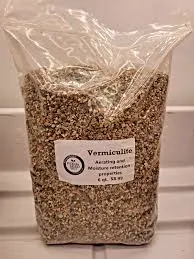Aug . 16, 2024 16:06 Back to list
Oxygen Lance Technology in Steel Production Enhancing Efficiency in Metal Manufacturing Processes
The Role of Oxygen Lancing in Steelmaking
Oxygen lancing is a critical technique employed in steelmaking, particularly in the production of high-quality steel. This process involves the injection of oxygen into molten metal, which facilitates various metallurgical reactions, enhances the purification process, and ultimately contributes to the efficiency and quality of the steel produced. As the steel industry evolves, the role of oxygen lancing in steelmaking factories has become increasingly significant.
Understanding Oxygen Lancing
Oxygen lancing involves using a lance, which is essentially a long pipe, to direct a high-velocity stream of oxygen into molten iron or steel. This scenario can create a series of oxidation reactions that remove impurities such as sulfur and carbon from the molten metal. The process not only aids in refining the steel but also helps in controlling the temperature and composition of the final product.
When oxygen is injected into the steel, it reacts with carbon to form carbon monoxide, which is then expelled as a gas. This reaction helps to lower the carbon content of the steel, essential for producing specific grades of steel with desired properties. The efficiency of oxygen lancing means that it can significantly reduce the time taken for refining, which is a key advantage in high-volume steelmaking operations.
Benefits of Oxygen Lancing in Steelmaking
1. Enhanced Purification One of the primary benefits of oxygen lancing is the enhanced removal of impurities. The process allows for the reduction of sulfur, phosphorus, and other unwanted elements, resulting in a purer product. This purification is crucial for the production of high-grade steel required in demanding applications like automotive and aerospace manufacturing.
2. Improved Product Quality By controlling the composition of the steel more effectively, oxygen lancing contributes to producing high-strength and durable steel. This is particularly important in sectors where material properties are critical for safety and performance.
oxygen lance steel making factory

3. Operational Efficiency The introduction of oxygen lancing can significantly improve the overall efficiency of steelmaking operations. It shortens the refining time compared to traditional methods, allowing for a quicker turnaround of batches. This efficiency can lead to lower production costs and increased profitability for steel manufacturers.
4. Environmental Benefits Oxygen lancing also has environmental advantages. By optimizing the steelmaking process, it can lead to lower emissions of greenhouse gases compared to older methods. Moreover, the reduced need for additional alloys and fluxes can diminish the environmental footprint of steel production, aligning with global sustainability goals.
The Future of Oxygen Lancing
As the steel industry faces increasing pressure to adopt cleaner and more efficient technologies, oxygen lancing is poised to play an even more prominent role. Continuous advancements in technology and process optimization will likely enhance its effectiveness, making it an indispensable component of modern steelmaking.
With ongoing research and development, the integration of artificial intelligence and machine learning in process management could further refine oxygen lancing practices. This innovation could lead to more precise control over the steelmaking process, improving quality and efficiency while minimizing waste.
Conclusion
Oxygen lancing is a revolutionary technique in the steelmaking industry that has transformed how steel is refined and produced. Its benefits, ranging from enhanced purification to operational efficiency and environmental sustainability, underline its importance in contemporary steel manufacturing processes. As the industry continues to innovate, the role of oxygen lancing will undoubtedly expand, paving the way for a more efficient and environmentally responsible future in steel production.
-
Eco-Friendly Granule Covering Agent | Dust & Caking Control
NewsAug.06,2025
-
Fe-C Composite Pellets for BOF: High-Efficiency & Cost-Saving
NewsAug.05,2025
-
Premium Tundish Covering Agents Exporters | High Purity
NewsAug.04,2025
-
Fe-C Composite Pellets for BOF | Efficient & Economical
NewsAug.03,2025
-
Top Tundish Covering Agent Exporters | Premium Quality Solutions
NewsAug.02,2025
-
First Bauxite Exporters | AI-Optimized Supply
NewsAug.01,2025
